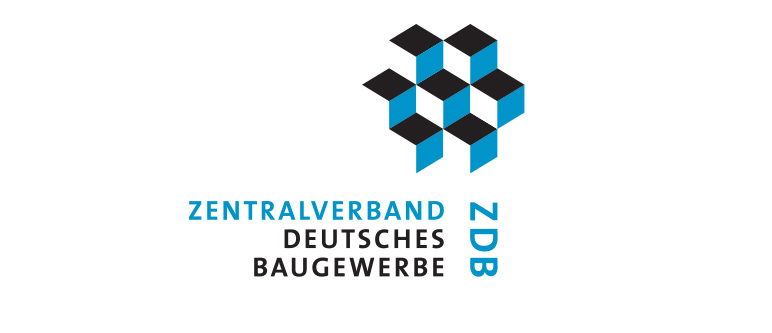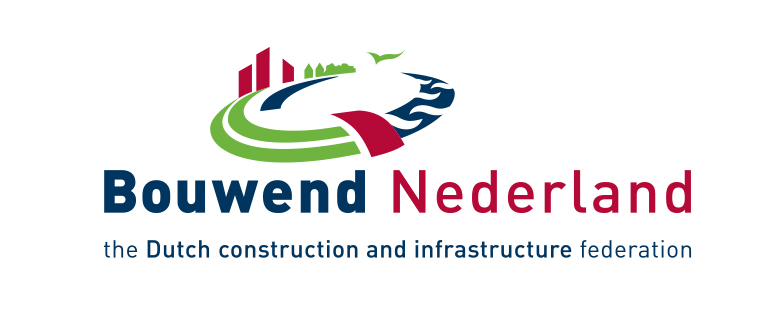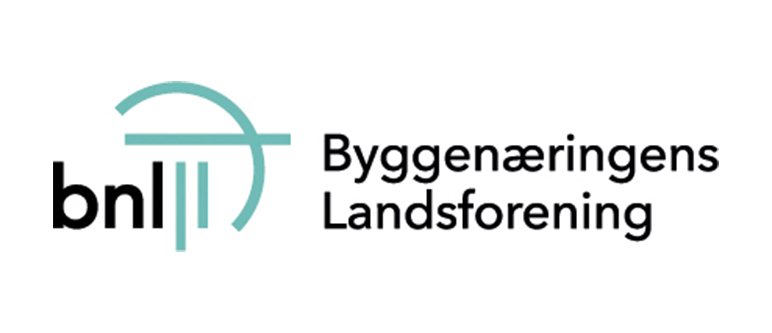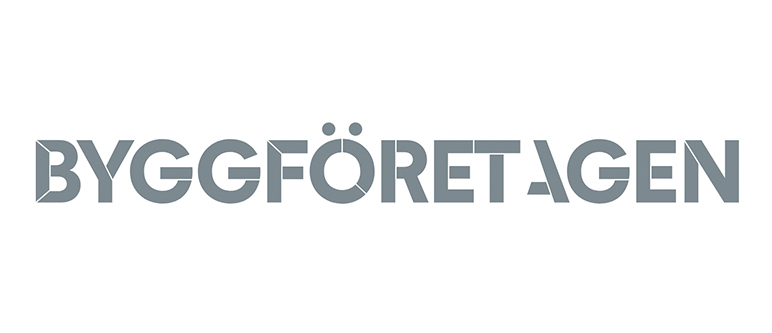General economic overview
According to the European Commission’s Summer 2020 Forecast, EU27 GDP grew by 1.5% in real terms in 2019, down from 2.1% in 2018. Domestic consumption increased by 1.9% with private and public government expenditure rising by 1.6% and 1.8% respectively. Total investment grew by 5.7% with investment in construction showing a much brighter picture than investment in equipment of which the growth rate contracted by 50% compared to 2018. At a rate of 2.7%, the volume of export of goods and services also grew at a slower pace than in 2018 (3.5%) while the volume of imports of goods and services grew at a higher rate (3.7% compared to 3.3% in 2018).
Despite moderate economic growth, total employment continued to increase albeit at a slower pace at a growth rate of 1% in comparison to 1.4% in 2018. The unemployment rate in the EU27 reached a new record low. At 6.7% it stood at its lowest level since October 2008. However, differences among Member States are still considerable. While the unemployment rate was 2% in the Czech Republic and 3.2% in Germany, it still amounted to double-digit values in Greece, Spain and Italy.
Although economic growth was moderate in total, the growth rate pointed to a noteworthy resilience of the EU’s economic development in view of a challenging external environment which can mainly be attributed to domestic factors. Indeed, downward trends stemmed from an increasingly fragile international environment. Geopolitical tension, protectionist trade policies as well the uncertainty surrounding the Brexit negotiations put externally oriented sectors such as manufacturing under considerable pressure. Domestically oriented sectors were thus at the source of the EU economy’s robustness. In particular, the construction sector contributed to growth.
Despite this robustness at the beginning of 2020, the EU economy could not withstand the effects of the COVID-19 pandemic during the 1st and 2nd quarter of 2020, which resulted in an unprecedented economic crisis. By way of illustration, it is estimated that the euro area economy operated at between 25% to 30% below its capacity during the period of the strictest confinement. Looking forward, the European Commission estimates EU GDP to contract by 8.3% in 2020 and to grow by 5.8% in 2021. However, this forecast assumes that no major second wave of infections will trigger new generalised restrictions; and that fiscal and monetary policies support the recovery and prevent large-scale bankruptcies. Moreover, a no-deal Brexit is still a pending risk.
GDP 2019
BILLION
POPULATION 2019
Total investment in construction in 2019
BILLION
Overall construction activity
In 2019, total investment in construction in the EU27 amounted to €1,324 billion, which represented 9.5% of GDP. The recovery observed in the previous years continued in 2019 albeit at a slower pace with a 2.6% growth (3.8% in 2018).
All segments performed well although they all showed lower growth rates than in 2018. With the most important market share and a growth rate of 2.3% (2.9% in 2018), housebuilding was the driving force of the sector in 2019. Here, new housebuilding stood for 21.6% while renovation and maintenance activities made up 28% of overall investments in construction. Investments in these segments rose by 2.7% (2.7% in 2018) and 2.3% (4.1% in 2018) respectively. Non-residential building represented a share of 31.6%. Investments in this segment increased by 2.6% in 2019 (3.9% in 2018). Civil engineering of which the share marginally increased to 18.8% showed the strongest growth with a rate of 3.6% (4.2% in 2018).
Against this background, construction employment kept growing in 2019 (+1.6%) although at a lower rate than in 2018 (2.6%). There were about 12.7 million construction workers in the whole EU27 in 2019 – working in more than 3.1 million construction enterprises – which represents 6.1% of the EU27 total employment. Lower growth rates in this area are due to an increased productivity (in some countries) and growing labour shortages. The latter are the result of difficulties for companies to find workers with the right skills but also a generally decreasing workforce owing to the demographic evolution in the EU.
Although the situation continues to vary from country to country, the overall picture remains positive. In 2019, only four countries, namely Finland, Greece, Sweden and Slovenia, registered a drop in investment in construction.
Germany remains the engine of the EU27 in the sector recording once more substantial growth with a rate of 3.8%. In terms of weight in the overall investment, it is followed by France, whose growth rates are nevertheless slowing down (2.2%). Also, in Spain, with a rate of 1.3%, growth slowed down considerably (5.7% in 2018). In Italy, investment in construction continued to grow with an increase of 2.3% (1.7% in 2018). Importantly, in Italy and Spain the construction sector has still not fully recovered from the 2008 crisis.
In Northern Europe, the situation differs considerably from country to country. While Denmark and the Baltic States registered growth rates, investment in construction in Sweden and Finland fell by 1.8% and 1.5% respectively. In Ireland, with a rate of 6.8%, investment in construction continued its growth path albeit at a slower pace. A similar evolution can be observed in the Netherlands where investments rose by 4% (6.6% in 2018). The Dutch construction sector was severely hit by a court ruling on granting permits for construction activities that emit large amounts of nitrogen, which brought thousands of construction projects to a halt.
The overall picture for Central and Eastern European countries is positive with Romania and Hungary recording spectacular growth rates of 20.9% and 16.8% respectively. In Bulgaria, the Czech Republic and Poland the evolution was still solid but far behind the level of 2018. Only Slovenia recorded a negative growth rate with -0.4%.
After an overall positive development in 2019, the construction sector had a good start in 2020. However, at the end of Q1, the COVID-19 crisis severely hit the construction sector in many countries. In Italy, Spain, Ireland, Slovakia and France construction activities came more or less completely to a halt. In most of the countries, construction activities were allowed to continue but also there, companies had to face a number of difficulties:
- Labour shortages, either related to workers being in quarantine or to travel restrictions within the EU or within a single country.
- Disruption of supply chains leading to a lack of construction materials at some points.
- A lack of protective equipment for workers preventing construction from resuming.
- Additional costs due to putting in place safety and health measures.
With countries lifting restrictions and health and safety protocols having been put in place, at the time of writing, in general, work on construction sites has resumed and companies are still benefiting from the pre-crisis order stock. As construction activities usually react later to general economic developments, the end of 2020 is expected to be critical for the sector as investments in new projects are expected to decline from autumn. At the time of writing, we expect a decline in investment of up to 8.5% for 2020 and the situation might worsen in 2021 if investment in construction does not recover significantly. Moreover, due to losses in equity during the sanitary crisis, companies will find it difficult to embark on new projects. Hence, state support will also be vital in this regard. A look back to the previous crisis shows that the sector faced severe drops in investment, and solid growth rates only showed up from 2016.
Housebuilding
In 2019, investments in this segment represented 21.6% of the EU27 total investment in construction. An overall high demand for additional housing units in urban areas, low mortgage rates, increasing incomes for households and investors’ search for investments with higher yields than capital markets, led to a favourable environment for investments in new housebuilding. However, at a rate of 2.7% in 2019, growth in investment in new housebuilding was weaker than in the previous years.
This lower growth can mainly be attributed to new housebuilding losing momentum on the most important markets, namely Germany, France and Spain. While the segment still experienced a remarkable development in Germany, with a growth rate of 4.3%, investment grew less strongly than in 2018. After a strong development in 2016 and 2017 in France, growth in new housebuilding continued its modest path at a rate of 0.8% in 2019, slightly higher than in 2018. In Spain, growth rates dropped significantly. While investments rose by 8.5% in 2018, it only grew by 1.5% in 2019.
A similar drop in growth rates can be observed for the Netherlands where, after several years of double-digit rates, investment rose by 2.9% only in 2019 in spite of the National Housing Agenda signed in 2018 with the aim of reducing housing shortages. In Sweden and Finland, investment in this segment even fell by 10.4% and 12% respectively.
In contrast to that, investment recorded significant increases in some countries. As building permits peaked in 2017, investment in new housebuilding grew by 3.8% in Austria in 2019 leaving little room for further growth. The situation is similar in Italy. The number of building permits started to rise significantly three years ago leading to a growth rate of 5.4% in 2019 in comparison to 4.5% in 2018. Increased growth can also be observed for Poland and Denmark where investments grew by 4.7% and 9.3% respectively.
Mostly dependent on private financial resources, investments in new housebuilding are expected to drop significantly, in particular in the light of the economic uncertainties due to the Covid crisis. This segment has also proven to be particularly vulnerable to the economic recession at the beginning of the decade. Nevertheless, these financial constraints contrast with a real need for new housebuilding as housing shortages persist, especially in urban areas, and could be cushioned by low interest rates.
Rehabilitation and maintenance
In 2019, investments in rehabilitation and maintenance activities represented 28% of the total investment in construction although considerable differences exist between the Member States. Mostly the Northern and Western European countries are driving this figure up. For instance, in Germany, with a share of almost 40%, investments in rehabilitation and maintenance are dominating the housebuilding market. With a share of around 37%, the segment is also dominating the Italian housebuilding market. In contrast to that, these activities play a rather marginal role in Eastern European countries. There, investments in this segment represent between 5% and 10% of total investment.
For the EU27, investments in this segment continued their growth path albeit at a slower pace. While 2018 recorded a growth rate of 4.1%, investment rose by 2.3% in 2019. Apart from Ireland, where investments dropped significantly, no country recorded negative rates. However, investments did not – or only marginally – increase(d) in France, Finland and Sweden.
Growth was more significant in Poland (+5.5%), Latvia (+4.3%) and Germany (+3.8%). Particularly strong growth rates were recorded in Portugal and in Denmark where investments grew by 9.2% and 8% respectively.
In contrast to the other building segments, rehabilitation and maintenance activities have proven to be the least volatile over the last ten years. Moreover, building renovation is currently at the centre of political attention being key to achieving a more energy efficient building stock. In this regard, the segment could serve as a stabiliser for the sector in the coming years.
Non-residential construction
The non-residential segment represented 31.6% of total investment in construction. In general, the private component is stronger than the public one. This is particularly the case for countries such as Italy and Spain of which the public finances were severely hit after the financial crisis in 2008. However, after having contrasted in the past years, growth rates for the respective components converged in 2019.
Investments in private non-residential building rose by 2.8% in 2019 while they grew by 4.4% in the previous year. Being closely linked to the overall economic development, this figure reflects the declining trends for the entire economy. Still, the segment was benefiting from a booming economy in the years before.
Investment in public non-residential building increased by 2.4% being the only construction segment showing stronger growth rates than in 2018. In total, investments in non-residential construction rose by 2.6%, compared to a growth rate of 4.4% in 2018, because of considerably weaker growth in the private component.
Investments in this segment declined in Slovenia (-2.9%) and Belgium (-0.8%) with a sharp decrease in demand for industrial and agricultural buildings for the latter. Apart from Sweden, Spain and Finland, where investments grew rather modestly and less than in the previous year, all countries record at least solid growth rates between 2% and 4% if not even spectacular rates.
With growth rates having already shrunk due to a more challenging economic environment in 2019, investments in non-residential buildings are expected to decline sharply in view of the economic recession. This could be partially compensated by a higher share of public investments in this area – by renovating public non-residential buildings for example. If one observes the pattern following the previous economic crisis, the picture is not very bright though as public investments have declined for several years.
Civil engineering
Investments in civil engineering represented 18.8% of the total investment in construction in 2019. The segment is particularly important in Eastern European countries and Portugal where its share amounts to 30% to 50% while it is between 10% and 20% in the other countries. In this regard, an especially dramatic evolution can be observed for Spain where the segment’s share halved during the last 10 years due to public spending cuts.
While investments in civil engineering continuously shrank from the beginning of the decade, signs of recovery showed up in 2017 (+0.5%) and 2018 (+4.2%) after public finances have been under pressure for several years. In 2019, investments continued their recovery path albeit at a slower rate than in 2018. Still, growing by 3.6%, investments in civil engineering showed the strongest growth rate of all segments. Despite this encouraging trend, the implementation of investments in infrastructure is a widespread concern with tendering and permit procedures delaying the start of projects considerably.
Looking into countries individually, the picture is fragmented. Several countries experienced significant declines in investments such as Denmark (-4.3%), Estonia (-4.3%) or Greece (-4.2%). In contrast to that, investment grew strongly in various countries. This is for instance the case for Belgium, Germany and Sweden where growth rates amount to 6.5%, 4.8% and 5.1% respectively and where an important part of the investment was directed towards railway projects. As local authorities were stepping up investments in the run-up to municipal elections, growth was also significant in France (+5.3%).
Whether this overall positive trend will continue over the next years depends on whether the economic crisis will transform into a sovereign debt crisis in the medium term which would lead to cuts in budgets. If one looks at the years that followed the previous crisis, the perspectives are not encouraging. Flexibility of the Stability and Growth Pact will be essential to renovate ageing infrastructure and complete missing transport links.
|
European Union* - Union européenne* - Europäische Union* Variation of investment in construction in real terms on previous year (%) |
||||||||||
| 2011 | 2012 | 2013 | 2014 | 2015 | 2016 | 2017 | 2018 | 2019a | 2020b | |
| 1. Building | 4.0 | -2.8 | -3.8 | 0.1 | 0.9 | 3.0 | 3.7 | 3.5 | 2.4 | NA |
| 1.1. Housebuilding | 3.8 | -3.2 | -3.1 | 0.8 | 1.6 | 5.0 | 4.0 | 2.9 | 2.3 | NA |
| 1.1.1. New Housebuilding | 8.2 | -5.6 | -4.5 | -0.7 | 3.7 | 6.1 | 7.0 | 3.8 | 2.7 | NA |
| 1.1.2 . Renovation and Maintenance | 2.5 | 0.2 | -0.5 | 2.5 | 0.7 | 4.0 | 2.1 | 4.1 | 2.3 | NA |
| 1.2. Non-residential** | 4.5 | -2.9 | -4.4 | -0.9 | -0.1 | 0.8 | 2.7 | 3.9 | 2.6 | NA |
| 1.2.1. Non-residential Private | 5.8 | -2.5 | -4.0 | -0.6 | 0.8 | 1.7 | 3.4 | 4.4 | 2.8 | NA |
| 1.2.2. Non-residential Public | -0.2 | -5.5 | -5.2 | -1.0 | -2.0 | -1.2 | -0.4 | 2.2 | 2.4 | NA |
| 2. Civil Engineering | -1.9 | -6.0 | -3.8 | -0.3 | -1.0 | -2.2 | 0.5 | 4.2 | 3.6 | NA |
| (1+2) Total Construction | 2.7 | -3.6 | -3.8 | 0.1 | 0.4 | 1.5 | 2.9 | 3.8 | 2.6 | -8.5 |
| * EU27 without : CY, EE, GR, HR, HU, IE, LU, MT, SK, RO | ||||||||||
| ** incl. R&M | ||||||||||
| GROSS VALUE ADDED - CONSTRUCTION / TOTAL ECONOMY VALEUR AJOUTEE BRUTE - CONSTRUCTION / TOTAL ECONOMIE BRUTTOWERTSCHÖPFUNG - BAUGEWERBE / GESAMTWIRTSCHAFT |
|||
| 2018 current prices in Bln. € | |||
| (1) constr. | (2) total economy | (1)/(2) | |
| COUNTRY | % | ||
| Germany | 152.8 | 3,012 | 5.1% |
| France | 117.5 | 2,092 | 5.6% |
| Italy | 66.8 | 1,583 | 4.2% |
| Spain | 67.7 | 1,088 | 6,2% |
| Poland | 33.4 | 434 | 7.7% |
| Netherlands | 33.4 | 693 | 4.8% |
| Sweden | 28.2 | 471 | 6.0% |
| Austria | 23.1 | 345 | 6.7% |
| Belgium | 21.6 | 410 | 5.3% |
| Finland | 14.9 | 202 | 7.4% |
| Denmark | 16.2 | 262 | 6.2% |
| Romania | 11.0 | 183 | 6.0% |
| Czech Republic | 10.5 | 187 | 5.6% |
| Ireland | 8.6 | 303 | 2.8% |
| Portugal | 7.3 | 176 | 4.2% |
| Slovakia | 6.4 | 81 | 8.0% |
| Hungary | 6.0 | 113 | 5.3% |
| Greece | 4.0 | 161 | 2.5% |
| Luxembourg | 3.2 | 54 | 5.9% |
| Lithuania | 2.8 | 41 | 6.9% |
| Croatia | 2.3 | 42 | 5.4% |
| Slovenia | 2.3 | 40 | 5.7% |
| Bulgaria | 2.0 | 49 | 4.2% |
| Estonia | 1.6 | 23 | 7.3% |
| Latvia | 1.7 | 25 | 6.7% |
| Cyprus | 1.1 | 18 | 6.2% |
| Malta | 0.4 | 11 | 3.7% |
| EU27 | 647 | 12,100 | 5.3% |
| Norway | 28.3 | 319 | 8.9% |
| Turkey | 47.2 | 589 | 8.0% |
|
INVESTMENT IN CONSTRUCTION / GDP - INVESTISSEMENT DANS LA CONSTRUCTION / PIB - BAUINVESTITIONEN / BIP |
|||
| 2019a current prices in Bln. € | |||
| (1) constr. | (2) GDP | (1)/(2) | |
| COUNTRY | % | ||
| Germany | 373 | 3,426 | 10.9% |
| France | 194 | 2,414 | 8.0% |
| Italy | 130 | 1,777 | 7.3% |
| Spain | 125 | 1,245 | 10.1% |
| Netherlands | 79 | 811 | 9.7% |
| Sweden | 53 | 490 | 10.8% |
| Poland | 49 | 541 | 9.0% |
| Belgium | 48 | 474 | 10.1% |
| Austria | 45 | 399 | 11.3% |
| Finland | 34 | 240 | 14.2% |
| Denmark | 33 | 312 | 10.6% |
| Ireland | 28 | 340 | 8.1% |
| Romania | 28 | 222 | 12.6% |
| Czech Republic | 21 | 221 | 9.4% |
| Hungary | 21 | 144 | 14.6% |
| Portugal | 13 | 211 | 6.3% |
| Slovakia | 9 | 94 | 9.5% |
| Greece | 8 | 187 | 4.1% |
| Bulgaria | 8 | 61 | 12.8% |
| Luxembourg | 6 | 63 | 10.0% |
| Croatia | 4 | 54 | 7.4% |
| Estonia | 3 | 28 | 12.4% |
| Lithuania | 3 | 48 | 7.0% |
| Slovenia | 3 | 48 | 5.5% |
| Cyprus | 3 | 22 | 12.3% |
| Latvia | 2 | 31 | 7.8% |
| Malta | 2 | 13 | 11.5% |
| EU27 | 1,324 | 13,916 | 9.5% |
| Norway | 54 | 371 | 14.6% |
| Turkey | 91 | 673 | 13.6% |
| NB: The absolute value figures concerning the total volume of construction are given for guidance only and are provisional. The reason for this is that in the various countries these figures are not necessarily calculated on the same basis. | |||
|
Total construction - Total construction - Bauwesen investment |
||||||
| (Mln. € fixed prices) | Per cent variation of investment in real terms on previous year (fixed prices) | |||||
| COUNTRY | 2019a | 2016 | 2017 | 2018 | 2019a | 2020b |
| AT - Austria | 43,747 | 0.5 | 3.3 | 3.7 | 2.6 | NA |
| BE - Belgium | 40,339 | 2.5 | 1.7 | 2.7 | 1.6 | NA |
| BG - Bulgaria | 6,829 | -40.3 | 23.1 | 11.3 | 3.0 | NA |
| CZ - Czech Rep. | 18,755 | -8.3 | 4.9 | 6.9 | 2.0 | NA |
| DE - Germany | 324,070 | 3.8 | 0.7 | 2.5 | 3.8 | NA |
| DK - Denmark | 27,923 | 7.0 | 4.8 | 4.7 | 4.4 | NA |
| EE - Estonia | 2,911 | 4.8 | 25.2 | 20.0 | 0.3 | NA |
| ES - Spain | 127,579 | 1.9 | 4.4 | 5.7 | 1.3 | NA |
| FI - Finland | 30,564 | 8.1 | 4.1 | 3.1 | -1.5 | NA |
| FR - France | 173,416 | 1.1 | 5.0 | 2.6 | 2.2 | NA |
| GR - Greece | 7,698 | 25.3 | -1.2 | -18.7 | -1.6 | NA |
| IE - Ireland | 24,487 | 12.8 | 13.4 | 12.5 | 6.8 | NA |
| IT - Italy | 124,985 | -1.3 | 1.0 | 1.7 | 2.3 | NA |
| LT - Lithuania | 3,017 | -9.3 | 9.2 | 13.7 | 8.3 | NA |
| LV - Latvia | 2,116 | -18.1 | 19.9 | 20.8 | 2.3 | NA |
| NL - Netherlands | 73,225 | 8.5 | 2.9 | 6.6 | 4.0 | NA |
| PL - Poland | 47,982 | -10.2 | -0.2 | 12.9 | 3.7 | NA |
| PT - Portugal | 12,718 | -3.3 | 5.9 | 3.5 | 6.0 | NA |
| SE - Sweden | 51,819 | 6.4 | 6.3 | 1.8 | -1.8 | NA |
| SI - Slovenia | 2,290 | -17.7 | 20.8 | 22.9 | -0.4 | NA |
| EU - European Union* | 1,146,469 | 1.5 | 2.9 | 3.8 | 2.6 | -8.5 |
| NO - Norway | 41.291 | 2.9 | 5.6 | -1.1 | 4.8 | NA |
| * EU27 without : CY, HR, HU, LU, MT, SK, RO | ||||||
|
Building - Bâtiment - Hochbau investment |
||||||
| (Mln. € fixed prices) | Per cent variation of investment in real terms on previous year (fixed prices) | |||||
| COUNTRY | 2019a | 2016 | 2017 | 2018 | 2019a | 2020b |
| AT - Austria | 35,048 | 1.7 | 3.9 | 3.8 | 2.7 | NA |
| BE - Belgium | 32,840 | 2.6 | 1.5 | 1.3 | 0.6 | NA |
| BG - Bulgaria | 3,905 | -11.2 | 37.4 | 7.6 | 7.6 | NA |
| CZ - Czech Rep. | 11,698 | 6.5 | 7.4 | 10.3 | 2.0 | NA |
| DE - Germany | 279,710 | 3.8 | 0.4 | 2.5 | 3.6 | NA |
| DK - Denmark | 20,731 | 14.4 | 9.6 | 3.2 | 6.7 | NA |
| EE - Estonia | 2,028 | 9.1 | 22.9 | 23.8 | 2.5 | NA |
| ES - Spain | 107,555 | 4.1 | 5.5 | 6.6 | 1.4 | NA |
| FI - Finland | 24,639 | 10.8 | 4.8 | 2.9 | -2.5 | NA |
| FR - France | 132,434 | 1.6 | 5.2 | 1.3 | 1.2 | NA |
| GR - Greece | 1,382 | -14.9 | -7.1 | 15.3 | 12.6 | NA |
| IE - Ireland | 20,767 | 18.5 | 14.8 | 14.2 | 7.9 | NA |
| IT - Italy | 110,634 | -0.7 | 2.0 | 2.4 | 2.2 | NA |
| LT - Lithuania | 1,674 | -2.2 | 4.7 | 10.9 | 9.4 | NA |
| LV - Latvia | 1,232 | -2.5 | 12.1 | 19.9 | 9.7 | NA |
| NL - Netherlands | 56,400 | 10.8 | 6.1 | 8.2 | 4.4 | NA |
| PL - Poland | 32,551 | -10.8 | 0.5 | 7.3 | 3.7 | NA |
| PT - Portugal | 6,830 | 1.4 | 5.8 | 4.9 | 7.9 | NA |
| SE - Sweden | 42,041 | 8.9 | 7.8 | 1.1 | -3.2 | NA |
| SI - Slovenia | 1,204 | -1.8 | 31.8 | 28.4 | -0.3 | NA |
| EU - European Union* | 925,303 | 3.0 | 3.7 | 3.5 | 2.4 | NA |
| NO - Norway | 28,980 | 3.6 | 6.7 | -4.4 | 3.7 | NA |
| * EU27 without : CY, HR, HU, LU, MT, SK, RO | ||||||
|
Housebuilding - Logement - Wohnungsbau investment |
||||||
| (Mln. € fixed prices) | Per cent variation of investment in real terms on previous year (fixed prices) | |||||
| COUNTRY | 2019a | 2016 | 2017 | 2018 | 2019a | 2020b |
| AT - Austria | 19,181 | 2.2 | 5.1 | 2.1 | 3.5 | NA |
| BE - Belgium | 18,971 | 3.5 | 1.6 | 1.9 | 1.6 | NA |
| BG - Bulgaria | 1,863 | 30.7 | 53.1 | -0.8 | 8.6 | NA |
| CZ - Czech Rep. | 3,622 | 27.1 | -9.9 | 10.7 | 2.0 | NA |
| DE - Germany | 198,310 | 5.0 | 0.6 | 3.0 | 4.0 | NA |
| DK - Denmark | 12,616 | 13.3 | 12.1 | 5.3 | 8.5 | NA |
| EE - Estonia | NA | 35.8 | 22.0 | NA | NA | NA |
| ES - Spain | 70,452 | 4.8 | 6.8 | 7.8 | 1.6 | NA |
| FI - Finland | 13,922 | 11.4 | 4.5 | 3.9 | -5.4 | NA |
| FR - France | 78,965 | 3.2 | 7.1 | 0.6 | 0.4 | NA |
| GR - Greece | NA | NA | NA | NA | NA | NA |
| IE - Ireland | 7,198 | 21.7 | 25.9 | 25.8 | 2.5 | NA |
| IT - Italy | 62,669 | -1.7 | 1.8 | 1.5 | 1.9 | NA |
| LT - Lithuania | 542 | 10.4 | -8.3 | 12.6 | 12.5 | NA |
| LV - Latvia | 287 | 2.1 | -10.1 | 32.2 | 6.0 | NA |
| NL - Netherlands | 30,775 | 17.0 | 8.4 | 8.3 | 2.2 | NA |
| PL - Poland | 10,430 | -2.9 | -2.6 | -4.0 | 5.0 | NA |
| PT - Portugal | 3,599 | 5.0 | 8.0 | 7.0 | 12.0 | NA |
| SE - Sweden | 24,068 | 10.9 | 7.9 | -3.8 | -5.8 | NA |
| SI - Slovenia | 431 | 5.5 | 24.2 | 22.1 | 8.7 | NA |
| EU - European Union* | 557,903 | 5.0 | 4.0 | 2.9 | 2.3 | NA |
| NO - Norway | 15,458 | 7.7 | 9.9 | -6.9 | 2.1 | NA |
| * EU27 without : CY, HR, HU, LU, MT, SK, RO | ||||||



































